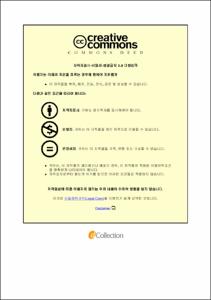상용화제와 표면개질이 천연고무/천연섬유 복합체의 물성에 미치는 영향
- Alternative Title
- Effects of compatibilizer and surface modification on properties of natural rubber/fiber composites
- Abstract
- Recently, environmental problems in polymer industry such as huge waste treatment and generation of fine plastics are continuously emerging. Accordingly, the need for the use of eco-friendly natural resources such as natural fibers is being emphasized. Natural fibers have various advantages such as low density, high specific strength, and low price. However, the polar natural fibers have poor compatibility with a hydrophobic polymer matrix, leading to a decrease in mechanical properties.
In this study, the curing behavior and mechanical properties of natural rubber (NR) composites with different contents of Kenaf as a natural fiber were investigated. Although the hardness and modulus of the composites increased with the Kenaf content, their tensile strengthes decreased due to the poor interfacial interaction between rubber and fiber and the fiber hardness. To improve interfacial properties, epoxidized natural rubber (ENR) and surface-modified fibers by alkaline or silane treatment were applied. The value of tensile strength and tear strength were slightly enhanced at 10 wt% of ENR in the rubber. In addition, the mechanical properties of the NR/ENR (90/10 by wt%) composites with surface-modified natural fibers were investigated. Modification of the fiber surface by alkali or silane treatment slightly improved the mechanical properties of the natural rubber/natural fiber composite. In particular, the silane-treated Kenaf showed more improved mechanical properties.
- Issued Date
- 2021
- Awarded Date
- 2021. 2
- Type
- Dissertation
- Publisher
- 부경대학교
- Alternative Author(s)
- Kyu Hwan Lee
- Affiliation
- 부경대학교 대학원
- Department
- 대학원 고분자공학과
- Advisor
- 이원기
- Table Of Contents
- 1. 서론 1
1.1 연구 배경과 목적 1
1.2 이론적 배경 3
1.2.1 그린복합재료 3
1.2.2 천연섬유 5
1.2.3 케나프 섬유 7
1.2.4 천연고무 10
1.2.5 에폭시화 천연고무 12
1.2.6 가황 14
2. 실험 16
2.1 재료 16
2.2 가공 및 분석 장비 18
2.3 복합재료의 제조 21
3. 결과 및 고찰 23
3.1 섬유 함량에 따른 천연고무 그린복합체 특성 23
3.1.1 섬유 함량에 따른 천연고무 그린복합체의 제조 23
3.1.2 섬유 함량에 따른 가교 특성 25
3.1.3 섬유 함량에 따른 경도 29
3.1.4 섬유 함량에 따른 응력-변형률 곡선 31
3.1.5 섬유 함량에 따른 인열 강도 34
3.1.6 섬유 함량에 따른 형태학적 특성 36
3.2 ENR 함량에 따른 천연고무 그린복합체 특성 38
3.2.1 ENR 함량에 따른 천연고무 그린복합체의 제조 38
3.2.2 ENR 함량에 따른 가교 특성 40
3.2.3 ENR 함량에 따른 경도 43
3.2.4 ENR 함량에 따른 응력-변형률 곡선 45
3.2.5 ENR 함량에 따른 인열 강도 47
3.2.6 ENR 함량에 따른 형태학적 특성 49
3.3 섬유 표면 개질에 따른 천연고무 그린복합체 특성 51
3.3.1 표면 개질에 따른 섬유의 구조 특성 변화 51
3.3.2 표면 개질에 따른 섬유의 형태학적 특성 55
3.3.3 섬유 표면 개질에 따른 천연고무 그린복합체의 제조 57
3.3.4 섬유 표면 개질에 따른 가교 특성 59
3.3.5 섬유 표면 개질에 따른 경도 62
3.3.6 섬유 표면 개질에 따른 응력-변형률 곡선 64
3.3.7 섬유 표면 개질에 따른 인열 강도 66
3.3.8 섬유 표면 개질에 따른 형태학적 특성 68
4. 결론 70
5. 참고문헌 72
- Degree
- Master
- Files in This Item:
-
-
Download
 천연섬유 복합체의 물성에 미치는 영향.pdf
기타 데이터 / 2.47 MB / Adobe PDF
천연섬유 복합체의 물성에 미치는 영향.pdf
기타 데이터 / 2.47 MB / Adobe PDF
-
Items in Repository are protected by copyright, with all rights reserved, unless otherwise indicated.